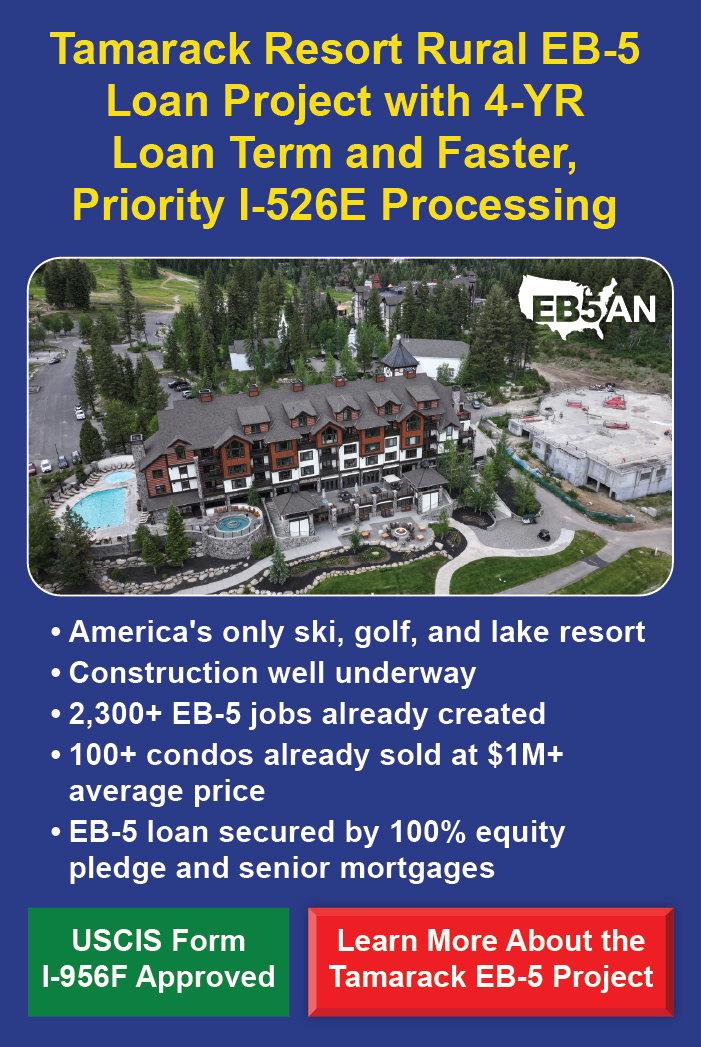
Foreign nationals looking to secure a better future for themselves and their family may not always be high-net-worth individuals. In fact, you don’t need to have millions in your bank account to obtain your Green Card through the EB-5 program.
However, obtaining your permanent residence through this program is a critical process, so you must understand the requirements and the best route to take.
In this article, we will explain the EB-5 program requirements, and provide you with valid funding options you can use for your investment.
Understanding EB-5 Visa Requirements
How Can You Invest in an EB-5 Visa if You’re Not a Millionaire?
- Gifted Funds
- Loans
- Inheritance
- Existing Property
- Partial Investments
- Funds You Cannot Use for an EB-5 Visa
What Is the Accredited Investor Requirement?
Get Your Green Card With EB5AN
Understanding EB-5 Visa Requirements

The EB-5 Immigrant Investor Program got launched in 1990 by the U.S. government to stimulate the economy while providing foreign nationals with an opportunity to get Green Cards. It offers successful applicants, their spouses, and children under the age of 21 a legal pathway to permanent residence in the U.S.
Below are the main requirements of this program.
Capital Investment Requirement
Capital, as defined by the United States Citizenship and Immigration (USCIS), includes cash as well as any real, personal, or mixed tangible assets that the foreign national owns and controls. This capital will be valued at a fair U.S. dollar market rate.
Under the EB-5 program, a $1,050,000 minimum investment is required. If the investment is made in either a rural location or one with high unemployment rates, collectively known as targeted employment areas (TEAs), this threshold can be lowered to $800,000.
However, this minimum investment does not need to come from a single , and there are ways to finance your EB-5 investment according to your financial goals and capabilities, which we will cover below.
Job Creation Requirement
Establishing full-time job opportunities for American workers lies at the core of the EB-5 visa program. Every EB-5 investment must result in the development of 10 or more full-time jobs for eligible workers.
EB-5 investments in regional center-sponsored projects can include indirect and induced jobs in this job count, which makes it easier to fulfill this requirement.
Source of Funds Requirement
A crucial requirement for EB-5 investors is that their capital must be both traceable and legally sourced. Failing to meet this condition can lead to the denial of an investor’s petition. Therefore, it is essential for investors to understand the legitimate sources of capital they can use for their EB-5 investment.
One of the most common sources for EB-5 investment funds is an investor’s regular income, such as their salary from employment or business profits. While this is a practical way to save for an EB-5 investment, primary earnings often aren’t enough to meet the required amount, leading investors to look for other sources to gather the necessary funds.
How Can You Invest in an EB-5 Visa if You’re Not a Millionaire?

Apart from savings from their main income, investors have other sources to meet the minimum investment requirement for the EB-5 program. EB-5 applicants can combine funds from gifts, inheritance, loans, property sales, and market investments, as long as they can provide the necessary documentation to prove the legal origin of the funds when filing their Form I-526E.
Here are some of the most common ones:
Gifted Funds
Foreign investors can use gifted funds, whether from family members or friends, to fulfill the EB-5 requirements. If an investor is considering this route, they need to have proper documentation of the gift. For one, the donor of the gift has to show that the funds come from a legal source. Additionally, the investor must show that it was a gift and not a loan that they are obligated to pay back.
It is common practice to establish the relationship between the donor and the investor, including when the funds were gifted and bank statements showing the receipt of the funds. USCIS may also require an affidavit attesting to the gifted funds.
Loans
You may get a loan from a bank, a lending organization, a financial institution, or even from close friends or relatives. In essence, any legitimate source may provide the loan. Yet, keep in mind that EB-5 regulations stipulate that the money must be at risk.
One common way for EB-5 investors to get money is through loans backed by their assets. It’s possible to use borrowed money for an EB-5 investment, but it can make proving the legality of the funds tricky.
For instance, if an investor gets a loan from a bank and uses an asset as collateral, they must show they legally own the asset and bought it with legal funds. This process gets even more complicated if the loan is from an individual. In that case, the investor must prove they own the asset and bought it legally, and the lender must show that the money they lent comes from legal sources.
Unsecured loans can also be used for EB-5 investments, provided the source of the funds and supporting evidence are documented.
The loan contract must detail the terms, including the interest rate and repayment deadline. Loan repayments must be traceable and follow market standards.
Inheritance
Applicants are allowed to use inheritance as a source of funds for an EB-5 visa, but only if the inheritance is legitimate and well-documented. When using inheritance as an EB-5 investment, you must submit documentation proving the deceased’s legal acquisition of the funds. This may include bank statements, tax returns, or other financial records.
You must also provide documents proving you received the inheritance, such as wills and/or documents from an estate administrator.
Existing Property
EB-5 investors often use money from selling a property to fund their investment. Whether the property was inherited or bought, they must prove it was legally obtained. If the investor bought the property, they need to show how they got the money to buy it.
This is a great option for investors who bought property years ago and may not have substantial liquid assets right now. They can sell the property at its current market value and use that money for their EB-5 investment.
To do this, the investor must provide all sale and purchase documents, including bank statements showing the money transferred to their account. They also need to include the ownership certificate and tax records to prove the property meets legal requirements.
Partial Investments
USCIS allows applicants to start the EB-5 with a partial investment and commit to investing the rest within a set timeframe.
This option is helpful for investors who don’t have all the funds upfront, giving them time and flexibility to arrange the remaining amount. It lets them secure an early priority date while allowing more time to liquidate their assets at a better rate.
Investors interested in this partial investment option need to find projects and regional centers that offer this flexibility.
Funds You Cannot Use for an EB-5 Visa
USCIS does not permit investment funding from the following sources:
-
- Funds earned from illegal activities such as gambling.
- Loans secured by non-personal assets.
- Undocumented funds
- Funds obtained through questionable transactions may raise red flags for money laundering.
What Is the Accredited Investor Requirement?

An accredited investor is a person who satisfies certain financial requirements established by regulatory organizations such as the Securities and Exchange Commission.
EB-5 regional center program investors have to meet one of these two requirements:
-
- The investor must own $1 million, whether individually or jointly with a spouse, which does not include the value of their primary residence.
- The investor must have earned at least $200,000 (or $300,000 when joined with a spouse) per year for the past two years and honestly anticipate continuing to make the same amount of money in the current year.
With the second option, an investor can still invest in a regional center project by meeting the net annual income requirement, even if their net worth is not $1 million.
Get Your Green Card With EB5AN

Prospective EB-5 applicants have various options to finance their investment, whether through personal income, property sales, gifts, loans, partial investments, or other routes. However, ensuring all requirements are met can be complex. This is why it’s best to work with industry professionals who can provide guidance and support throughout the process, helping to ensure a smooth and successful EB-5 journey.
EB5AN has helped more than 2,300 families from 60 countries relocate to the United States as lawful permanent residents. Our expert team has more than a decade of experience, and offers clients first-rate, low-risk EB-5 regional center projects with a 100% USCIS project approval rate to date.
To find out about the investment options that suit you best, please schedule a free consultation with our team today.













